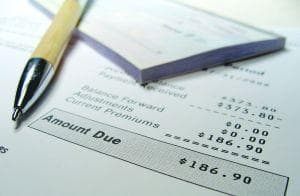Advertisement
Retirement Advice For Those With Time To Plan
Resume
Recently we asked listeners in their 20s and 30s for their questions regarding retirement planning. Mary Beth Frankin of Kiplinger’s Personal Finance joined us Tuesday with some advice for those looking to rev up their savings.
Take a Two-Pronged Approach
When starting out, take a two-pronged approach: pay off outstanding debt and contribute to savings. In general, young people should try and save 10 percent of their paychecks. If you work for an employer that offers to match 401(k) contributions, don’t pass up that free money. However, don’t do anything that would interrupt the repayment of your student loans. Student loans should be the first thing you consider.
The Value of Time and Compounding
At 25, if you can put away $2,000 a year for retirement and do that for 10 years, you could stop at age 35 and never have to put away another dime. You will accumulate more by retirement age this way than starting at 35 and saving for the rest of your working life. Even if it's a small amount, get your money working for you at an early age.
The Roth IRA
A Roth IRA is a great option for young people who want to start saving for retirement early. The Roth IRA works reverse of a traditional IRA; it does not give you an upfront tax deduction but any money that you take out in retirement will be tax free. For a young worker right now who is probably not making a lot of money and consequently not in a high tax bracket, a Roth IRA makes a lot of sense.
The money you put into your Roth IRA, a max of $5,000 each year, can be invested in stocks, mutual funds or a money market account. Mutual funds are a good route for someone starting out.
The Roth IRA has a lot more flexibility than a traditional IRA. You can take money out down the road, if need be, without penalty.
Create an Emergency Fund
It is important to keep some savings in a more liquid emergency fund and avoid relying on credit cards to dig yourself out of a mess. To know how much you should have in your emergency fund you should take a look at your fixed expenses like rent, loan payments and utility bills. Aim to have three to six months of those expenses on hand in case of an emergency.
If someone is 25 putting away, say, $2,000 a year for retirement they could do that for 10 years and stop and never put away another dime.
Mary Beth Franklin, Kiplinger's Personal Finance
If you want to make your emergency fund more profitable you could put your emergency fund in a certificate of deposit. With a CD you make a deposit for an agreed upon time. Generally, the longer you commit the higher the interest rate. But, if you need that money earlier than agreed you’re going to have to pay a fee. There are also online banking options that have slightly higher interest rates than their brick and mortar counterparts.
Investing In Stocks
You have to decide if you want to invest in individual stocks, usually a riskier endeavor, or mutual funds, which are managed by a professional investor who is diversifying the fund for a variety of different goals. Diversification is important because you never know which part of the market will be up and which will be down.
Saving for Your Child’s Future
529 College Savings Plans, that each state operates independently, is a great way for families to save for what might be their largest financial expenditure of their lives. Some states offer tax incentives on these savings plans. The money you put into a 529 grows tax free and as long as the money is used to pay for college educational expenses, the money comes out tax free as well.
- Here & Now: Retirement planning for Baby Boomers
Compiled by Abby Elizabeth Conway
This segment aired on March 8, 2011.